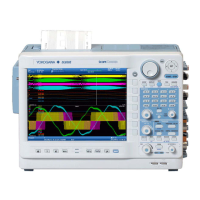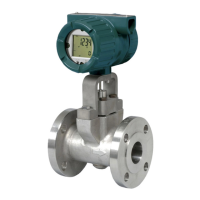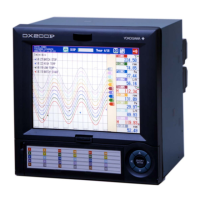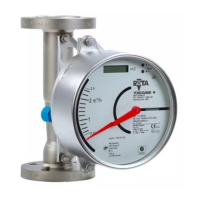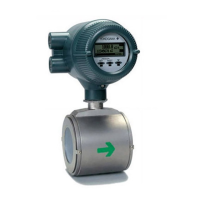App-24
IM 701210-06E
Filter Characteristics
The characteristics of each filter are indicated below.
Type Characteristics Bandwidth Compu-
tation Type
SHARP Steep attenuation slope (–40 dB per octave) LowPass FIR
Linear phase and constant group delay HighPass
Ripple exists in the passband BandPass
Stop band is comb-shaped
GAUSS Gentle attenuation slope LowPass FIR
Linear phase and constant group delay
No ripple in the passband
There is no overshoot in the step response.
Low order and small delay
MEAN Comb-shaped characteristics LowPass FIR
(moving Linear phase and constant group delay
average) There is no overshoot in the step response.
IIR Attenuation slope is between SHARP and GAUSS LowPass IIR
(Butterworth) Not linear phase and group delay not constant HighPass
No ripple in either passband or stopband BandPass
Cutoff frequency can be set lower than SHARP/GAUSS
Close to the characteristics of an analog filter
Type Pass-band Attenuation Attenuation at the Phase Selectable
Ripple Slope Stop-band Cutoff Range
SHARP 0 dB –40 dB/OCT
(Low Pass)
–40 dB/OCT –40 dB Linear phase 2 to 30%
(High Pass)
GAUSS ±0.3 dB –3.0×(f/fc)
2
dB Linear phase 2 to 30%
MEAN 0 dB See characteristics diagram Linear phase -
(moving average)
IIR 0dB –24 dB/OCT
(Butterworth) (Low Pass)
–24 dB/OCT Not linear phase 0.2 to 30%
(High Pass)
Group Delay Characteristics
Group delay refers to the delay of the output frequency with respect to the input
frequency (sine wave) due to the response characteristics of the filter. The group delay
can be normalized using the sampling period (Ts), and the unit is s/Ts. The delay for
each frequency can be derived from the equation (group delay of each frequency ×
sampling period).
Example
The group delay for moving average can be expressed as follows (constant regardless of
the frequency).
Group delay for moving average [s/Ts] = (the number of moving average points – 1)/2
If the number of moving average points is 16,
Group delay [s/Ts] = (16-1)/2 = 15/2 = 7.5 [s/Ts]
If the sampling frequency (fs) is 100 [kHz],
Ts = 1/fs = 1/(100 [kHz]) = 10 [µs]
Therefore,
Delay = group delay × sampling period = 7.5 [s/Ts]×10 [µs] = 75 [µs]
Computation Delay
The processing time of the DSP channel inside the DL750/DL750P requires 4 sampling
periods. Therefore, the delay of the actual digital filter is (4 sampling period) + (delay
determined from the group delay characteristics).
Appendix 6 DSP Channel Computation (Optional)
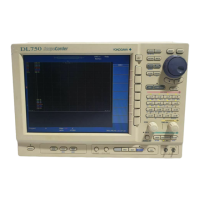
